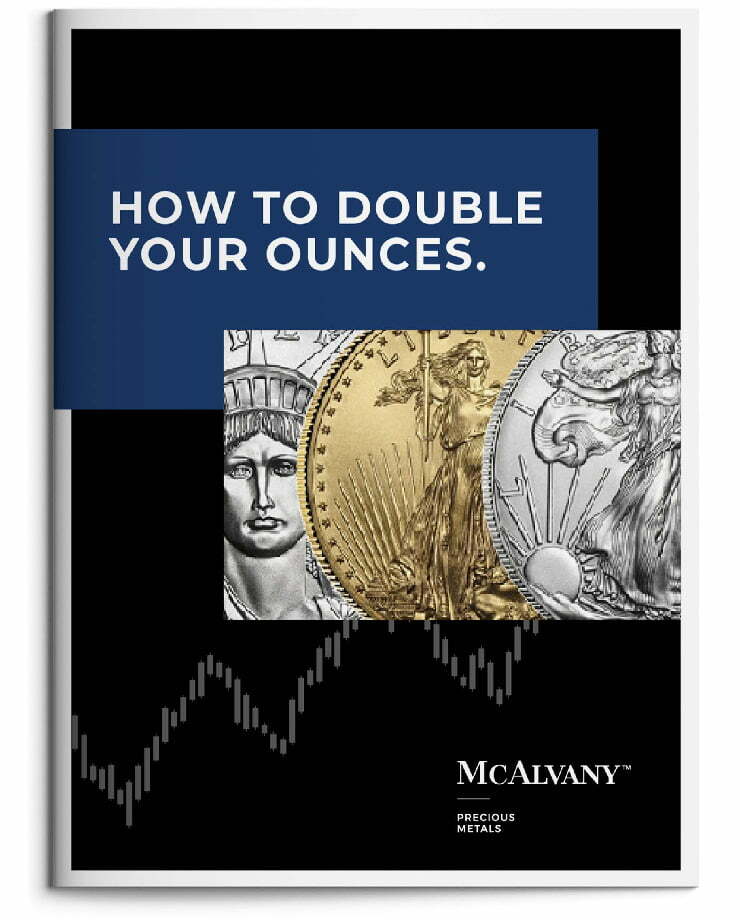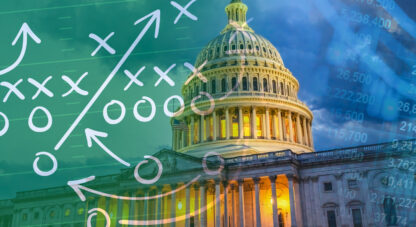Confidence in Destination
For many months, HAI’s view has been that the U.S. is all-in on a policy commitment to run the economy hot, inflate the debt away, implement industrial policy, reindustrialize the atrophied U.S. manufacturing base, and attempt to preempt and address (with these stimulatory measures) any economic and/or market crisis that threatens to break the system. To be clear, the trade-off for this policy prerogative is very likely to be inflation and a seriously negative impact to the purchasing power of the U.S. dollar.
With that thesis in mind, this week’s news and resulting market action were notable. The week featured myriad Federal Reserve officials delivering market-moving speeches that accentuated massive volatility in both market prices and market-based rate-cut odds for the upcoming FOMC meeting on December 10th.
In short, through Thursday, the Fedspeak painted a decidedly hawkish picture. Several Federal Reserve officials, including Cleveland Fed President Beth Hammack, Dallas Fed President Lorie Logan, Boston Fed President Susan Collins, and member of the Fed Board of Governors Michael Barr all donned the hawk suit and emphasized the ongoing risk of inflation while cautioning against further rate cuts.
It all seemed to amount to a formidable pushback to the HAI thesis that inflation is the macro variable most likely to be sacrificed by policymakers going forward on a secular basis. It also seemed a hefty rejection by the Fed of what BCA Research described in mid-October as a “regime change” at the Fed, “in which the primacy of price stability is displaced by the primacy of ultra-low real rates.” In other words, it seemed that the Fed’s primary focus will now shift from keeping inflation close to or below target to suppressing yields (despite inflation) to keep the wheels from imminently falling off the crisis-ridden fiscal wagon.
Hard on the heels of the heavy hawk talk, rate cut odds for the December FOMC meeting plunged from the low 60% range at the start of the week to the upper 30% range on Thursday. It was cold water on the excited flames of dovish expectations for a cut just a week prior—and markets certainly did not like it. This week, through Thursday’s close, the Nasdaq 100 was down 3.81% and the S&P 500 had lost 2.90%.
In HAI‘s view, this hawkish reversal was almost certainly a temporary and ultimately futile credibility building exercise for a woefully trapped U.S. Federal Reserve Bank. At this point, HAI assumes that behind closed doors the Fed must know that it can’t raise rates or even keep them sustainably elevated at current levels without ushering in a devastating debt-spiral dynamic that would eventually crush the system.
Sure enough, Governor of the Federal Reserve Bank of New York John Williams suddenly re-flipped the script on Friday, putting a rate cut squarely back on the table for the December FOMC meeting. Speaking in Santiago, Chile, Williams emphasized that downside risks to employment have increased while upside risks to inflation have eased. He said, “I view monetary policy as being modestly restrictive, although somewhat less so than before our recent actions… Therefore, I still see room for a further adjustment in the near term to the target range for the federal funds rate to move the stance of policy closer to the range of neutral, thereby maintaining the balance between the achievement of our two goals.”
Importantly, Williams suggested that he was more worried about employment than inflation. He continued, “My assessment is that the downside risks to employment have increased as the labor market has cooled, while the upside risks to inflation have lessened somewhat… Underlying inflation continues to trend downward, absent any evidence of second-round effects emanating from tariffs.”
That affirmation of a dovish bent from Williams sent rate-cut odds soaring right back up to nearly 70%—even higher than where they were at last week’s close.
Now, John Williams is an especially important voice. As the President of the New York Fed, the body that executes special market operations and trading for the Federal Reserve Bank, Williams has a unique vantage point from which to gauge liquidity and funding stress in the market. By extension, he has a more informed and valued opinion as to when the market requires Fed monetary easing to maintain smooth market functioning. In short, when John Williams speaks, the Fed listens, and on Friday, Williams essentially said, “Fed, you need to cut.”
In light of rate-cut expectations increasing to nearly 70%, a brief historical note might be pertinent. In recent history, 60% or better market-based odds for rate reductions have been almost perfectly correlated with Fed cuts.
Additionally interesting, William’s pivotal comments this week follow comments he made late last week suggesting that after the Fed ends quantitative tightening (QT) balance sheet reduction on December 1st, quantitative easing (QE) balance sheet expansion will soon follow.
Recall that the November 7th HAI referred to a newly brewing market funding crisis similar to the infamous 2019 repo spike. That’s the very same repo crisis that resulted in a brief spike in repo rates to 8-10%. That spike would have quickly collapsed the system had the Federal Reserve not started to aggressively grow its balance sheet to offset the stress.
Indeed, over recent weeks we have seen something very similar start to happen all over again. This time, it is the secured overnight financing rate that is above interest on reserve balances. Importantly, however, the implications are basically the same. Massive U.S. fiscal deficits have begun crowding out and overwhelming U.S. repo markets all over again.
In response to that newly resurfacing repo market stress, John Williams just said that gradual purchases of assets by the Fed would now be a “natural next stage” following the end of QT.
Furthermore, in a Financial Times article titled, “NY Fed convened meeting with Wall Street firms over key lending facility,” from last Friday, the author reported that:
“New York Federal Reserve president John Williams convened a meeting with Wall Street dealers this week over a key short-term lending facility, underscoring officials’ concerns about strains in US money markets. The hastily arranged meeting, which has not been previously reported, took place on the sidelines of the Fed’s annual Treasury market conference on Wednesday, according to three people familiar with the matter.
“It comes at a time when banks, investors and officials are concerned about signs of stress in an arcane, but vital corner of the US financial system. Williams solicited feedback from primary dealers, mostly banks that underwrite the government’s debt, on the use of the Fed’s standing repo facility, which central bank officials describe as a crucial pressure relief valve to help them keep short-term borrowing costs within their target range.
“A representative from many of the 25 primary dealers was in attendance, the people said. They noted that the attendants were broadly members of banks’ teams specializing in fixed-income markets. A spokesperson for the New York Fed confirmed the meeting took place.”
In HAI’s view, the fact that this “hastily arranged meeting” took place—confirmed by the New York Fed and reported on by the FT—strongly suggests that these strains in the money markets are not being taken lightly—at all—by officials.
The root cause of the funding stress is that after 30 consecutive months of shifting U.S. debt issuance to the front end of the curve (because there are no longer adequate buyers for long-term U.S. debt), the weekly refinancing roll of short-term U.S. T-bills has gotten so large that it now requires a secularly larger U.S. Treasury General Account (TGA). That larger TGA has recently been crowding out U.S. money markets, which, in turn, puts upward pressure on repo rates.
And that all means that the Fed desperately needs to keep U.S. money markets sanguine to keep repo rates from spiking in order to avoid touching off volatility-driven forced selling of long-term U.S. Treasuries. Otherwise, that selling would likely threaten a global debt spiral as yields spiked—unless central banks came in to massively grow their balance sheets with QE to support global bond markets.
Now, the Fed Standing Repo Facility (SRF) was created after the 2019 repo rate spike to provide just such large amounts of liquidity immediately to keep money markets calm. But, as Bloomberg reported this week in an article titled, “Bond dealers rebuff NY Fed tool as strains in repo market build,” bond traders have been reluctant to use the SRF. This has complicated the central bank’s efforts to ease strains in the market for repurchase agreements because, as primary dealers told officials, “borrowing directly from the central bank still carries a stigma and could be seen as a sign of trouble.”
So, again, if the Fed’s SRF tool can’t be effectively and sustainably used to keep money markets calm and avert funding stress caused from unsustainable front-end Treasury issuance that’s causing secular TGA growth, then a switch from QT to renewed QE Fed balance sheet growth is the final backstop.
Along with Fed and other global central bank rate cuts, this balance sheet growth (liquidity expansion) is, in HAI’s view, clearly a recipe for secularly high levels of inflation.
Of additional intrigue this week, former head of Trump’s Council of Economic Advisors and now Fed governor Stephen Miran certainly added more signal than noise in a speech he gave on Wednesday. In the speech, Miran urged the Fed to reduce regulations on U.S. banks in the interest of “preventing U.S. Treasury market dysfunction in the first place.” In other words, Miran was pitching another form of looser policy to preempt a crisis caused by further funding stress.
We’ve already seen global central banks preemptively cut rates as much as they did in response to the Great Financial Crisis. We’re about to see a new round of preventive Fed balance sheet expansion. And Stephen Miran is suggesting that we preemptively loosen financial regulations now rather than wait to do it in response to the next crisis.
It all sounds reasonably forward thinking, but the point is this: the reason significant rate cuts, balance sheet expansion, and looser financial regulation have historically been permitted only after a crisis is because they’re all inflationary. In a world where price stability is a high-priority goal, policymakers take these measures only when they have no other choice.
That all these measures are already in play preemptively is a major signal that we are no longer in Kansas anymore and that (other than in Fedspeak lip service) inflation isn’t the priority it used to be. Now, that’s alarming because policymakers weren’t all that good at delivering price stability even when they prioritized it.
So while numerous Fed mouthpieces were jawboning fiercely hawkish rhetoric this week in a futile Fed credibility building effort, John Williams and Stephen Miran were busy addressing the new reality. That new reality is that the Fed needs to ease financial conditions with more rate cuts (despite already loose conditions and inflation still well above target for many years), the Fed needs to grow its balance sheet (inflationary) again to keep funding stress muted and avoid another bond market crisis, and the Fed wants preventive financial deregulation (ultimately likely inflationary)—all to serve their new top priority: to keep markets functioning and the government financed.
In HAI’s view, regardless of the meeting-to-meeting FOMC noise, this new reality (to borrow from Jay Powell at the Jackson Hole Symposium two-years ago), is now clearly the direction of travel for the Fed. And that direction is firmly bullish, secularly, for gold, precious metals, and hard assets more broadly. In HAI’s view, when the market really starts to distinguish between the false Fedspeak rhetoric and the reality of what’s really going on, we’ll see an acceleration of the already well established bullish trend for precious metals, miners, and hard assets—and this author suspects it won’t take long.
If policymakers’ efforts to preempt crisis are successful, the inflationary consequences are likely to send gold soaring. If policymakers’ preemptive efforts can’t ultimately avert crisis, the crisis response will likely be on a previously unimagined scale, also sending gold skyward. In other words, for gold and precious metals, assume volatility, but have confidence in the destination—much higher.
Weekly performance: The S&P 500 was down 1.95%. Gold was off 0.48%, silver lost 1.12%, platinum was down 2.23%, and palladium was off 1.78%. The HUI gold miners index was off 3.44%. The IFRA iShares US Infrastructure ETF was down 1.21%. Energy commodities were volatile and mixed on the week. WTI crude oil was down 3.51%, while natural was nearly flat, up 0.17%. The CRB Commodity Index was lower by 2.24%. Copper was down 0.86%. The Dow Jones US Specialty Real Estate Investment Trust Index was off 0.97%. The Vanguard Utilities ETF was down 0.72%. The dollar index was up 0.90% to close the week at 100.19. The yield on the 10-yr U.S. Treasury was off 8 bps to close the week at 4.07%.
Have a wonderful weekend!
Morgan Lewis
Investment Strategist & Co-Portfolio Manager
MWM LLC















